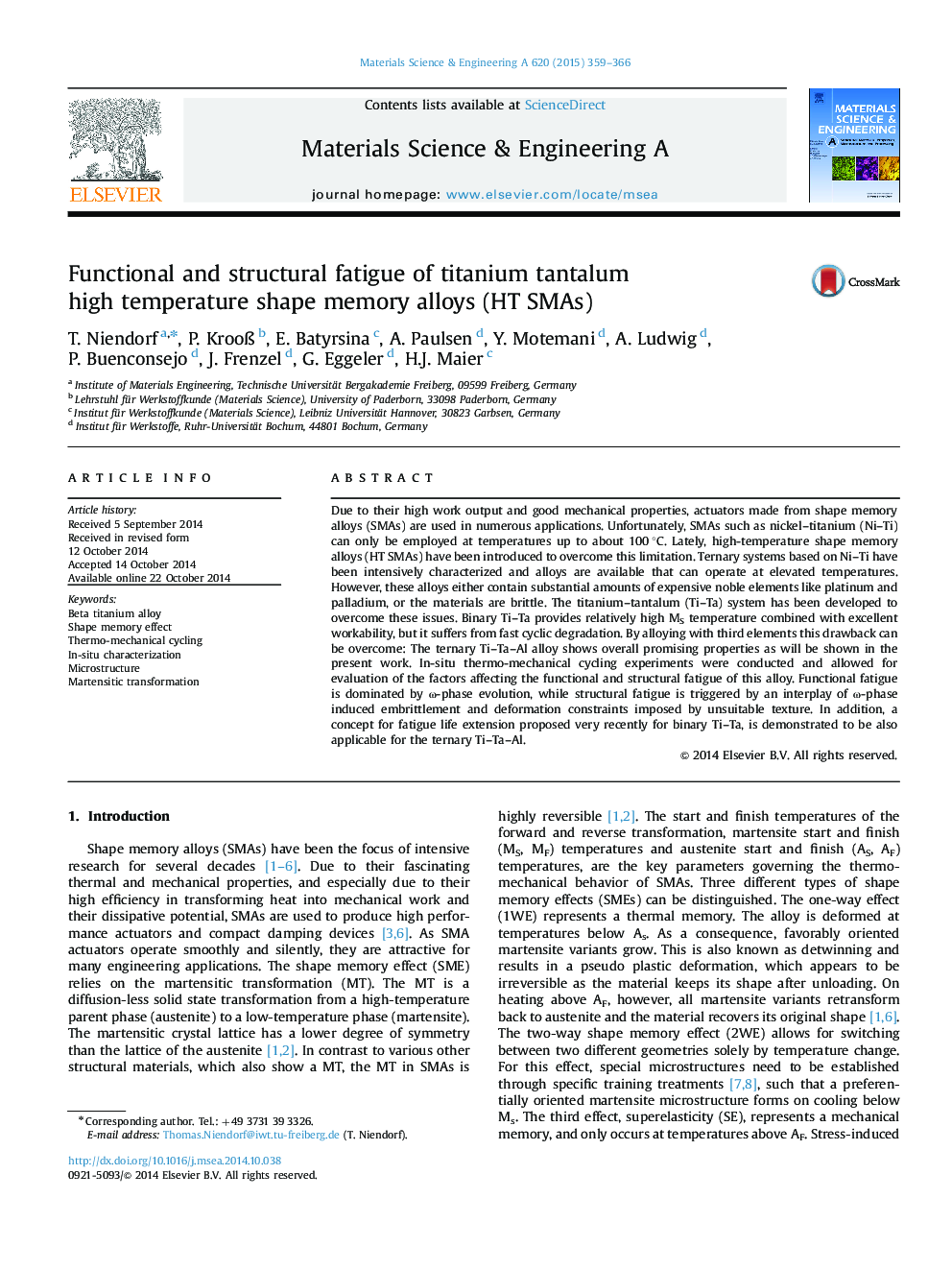| Article ID | Journal | Published Year | Pages | File Type |
|---|---|---|---|---|
| 1574605 | Materials Science and Engineering: A | 2015 | 8 Pages |
Abstract
Due to their high work output and good mechanical properties, actuators made from shape memory alloys (SMAs) are used in numerous applications. Unfortunately, SMAs such as nickel-titanium (Ni-Ti) can only be employed at temperatures up to about 100 °C. Lately, high-temperature shape memory alloys (HT SMAs) have been introduced to overcome this limitation. Ternary systems based on Ni-Ti have been intensively characterized and alloys are available that can operate at elevated temperatures. However, these alloys either contain substantial amounts of expensive noble elements like platinum and palladium, or the materials are brittle. The titanium-tantalum (Ti-Ta) system has been developed to overcome these issues. Binary Ti-Ta provides relatively high MS temperature combined with excellent workability, but it suffers from fast cyclic degradation. By alloying with third elements this drawback can be overcome: The ternary Ti-Ta-Al alloy shows overall promising properties as will be shown in the present work. In-situ thermo-mechanical cycling experiments were conducted and allowed for evaluation of the factors affecting the functional and structural fatigue of this alloy. Functional fatigue is dominated by Ï-phase evolution, while structural fatigue is triggered by an interplay of Ï-phase induced embrittlement and deformation constraints imposed by unsuitable texture. In addition, a concept for fatigue life extension proposed very recently for binary Ti-Ta, is demonstrated to be also applicable for the ternary Ti-Ta-Al.
Keywords
Related Topics
Physical Sciences and Engineering
Materials Science
Materials Science (General)
Authors
T. Niendorf, P. KrooÃ, E. Batyrsina, A. Paulsen, Y. Motemani, A. Ludwig, P. Buenconsejo, J. Frenzel, G. Eggeler, H.J. Maier,
